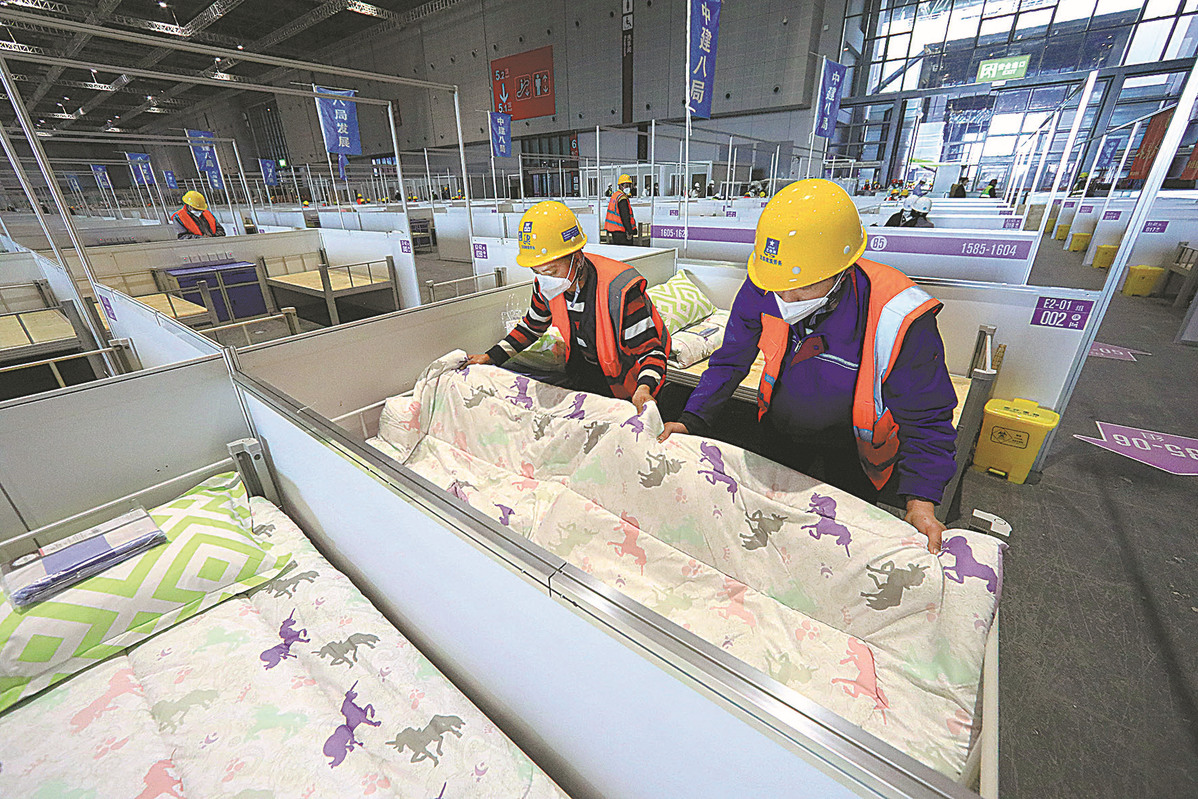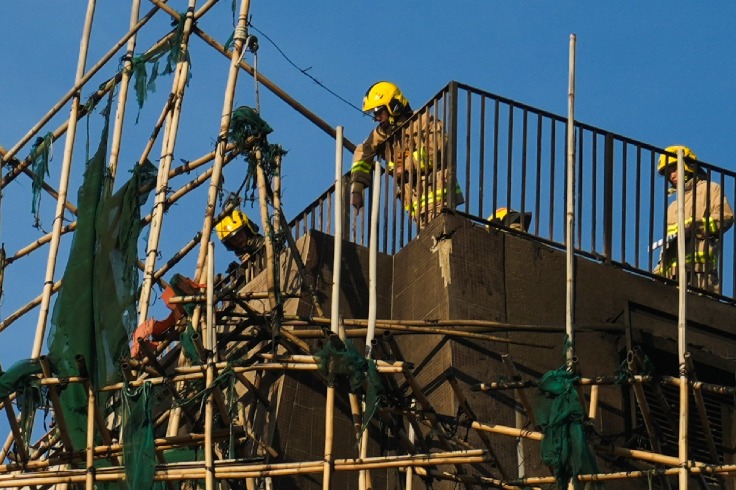Giant makeshift hospital to ease treatment burden


With a capacity of 50,000 beds, the makeshift hospital at the National Exhibition and Convention Center in Shanghai, the largest ever of its kind, is set to greatly enhance the city's capacity for the treatment of COVID-19 patients, the total number of which has exceeded 130,000 since the current outbreak started on March 1.
Overall construction of the makeshift hospital was completed on Friday night.
"This will be the largest makeshift hospital ever. We will have more than 5,000 medical staff treating 50,000 patients, and nearly 10,000 people will do the logistics and supporting work," Chen Erzhen, vice-president of Ruijin Hospital, who is also head of treatment teams at makeshift hospitals in Shanghai, was quoted as saying by People's Daily.
Shanghai is experiencing its worst COVID-19 outbreak in two years, with its daily tally of new infections still surging. On Thursday, the city reported over 20,000 new infections.
While the majority of patients are asymptomatic or only have mild symptoms, the city has been racing against time to build makeshift hospitals to ensure swift quarantine and treatment of the infected in order to break the transmission link of the highly transmissible Omicron variant, the major cause of the current outbreak.
The city has built four major makeshift hospitals with a combined capacity of 38,000 beds, the majority of which have become operational, Jin Chen, deputy director of the Shanghai municipal commission of housing and urban-rural development, said on Friday.
At the same time, district-level governments have also retrofitted a number of makeshift hospitals, creating an additional 21,000 beds in total, Jin added.
With the makeshift hospital at the NECC put into operation, Shanghai will have more than 100,000 beds for COVID patients.
Located in the west of the city, the NECC, which has a total indoor area of more than 400,000 square meters, is the largest single block building and exhibition complex in the world. Divided into eight giant exhibition halls, it looks like a four-leaf clover from a bird's-eye view.
Five construction companies and several architectural design firms have participated in the transformation of the venue since Monday.
The section located in Hall 3 completed construction at 4 pm, Friday.
China Construction Third Engineering Division Corp Ltd said it only took 80 hours, 16 hours faster than originally planned, to complete construction of the section, which houses 3,440 beds.
Bao Yaxian, director for hospital and healthcare design at East China Architecture Design and Research Institute, said she was notified on Monday at midnight that her team would be responsible for the overall design of Halls 5 and 6 being made into makeshift hospitals.
"I immediately discussed with our colleagues on the design at 3 am and without sleeping we started preliminary design work right away," said Bao. "We delivered the overall plan for the 120,000 square meters areas on Tuesday."
In drafting the plan, Bao said they also had meetings with the property's owner and the construction company to accelerate the construction process by using construction materials and premanufactured models they already had at hand.
"We have assigned different colors to different zones, so that people can better orient themselves in the hospital," she said. "To maximize the use of space, we added bunk beds in places that don't affect the views of others", which increased the number of beds in Halls 5 and 6 from 12,000 to 15,000.
Bao said to ensure smooth communication and quick response, she and 20-plus designers from the company worked and slept on site.
Chen Juan, a designer with China Construction Eighth Engineering Division Corp Ltd, came to the site to work with the construction crew on Tuesday.
"Since coming here, I only slept two to three hours every day," said Chen. "We drew design papers on the site to make sure workers could start to build accordingly."
Each day, she walked more than 25,000 steps, as the step counter on her phone showed.
The reconfiguration of Halls 7 and 8, which also started on Monday, was undertaken by China Railway Construction Engineering Group. Around 4,500 workers were involved in the project, according to the group.
Despite the short construction time, a lot of convenient functions have been added, such as electric sockets at each bed and heating devices at every tap to provide hot water.
Chen, who has been working at different quarantine facilities since March 12, said:"I do miss my family, especially my 5-year-old son. I felt guilty when my son called and asked when I would be home.
"But I also felt my responsibility. There's a lot of pressure on us, because the quicker we deliver the plan, the sooner patients can get treatment."
- Xi: Build on Winter Olympics legacy
- Xi talks with Philippine president over phone
- China's COVID-19 vaccines offer seniors significant protection against severe symptoms
- E-commerce platforms take steps to address delivery issues
- India sees enhanced strategic cooperation with China, Russia, experts say
- Trio investigated for suspected wildlife poisoning in Poyang Lake
- Silk Road forum highlights Xinjiang's key role in BRI
- CPC leadership holds meeting on 2026 economic work, regulations on law-based governance
- Successful election of HKSAR's 8th-term LegCo is of milestone significance: State Council spokesperson
- When the Olympics meets tai chi
- Allan Zeman slams Western media bias in Tai Po fire tragedy





































